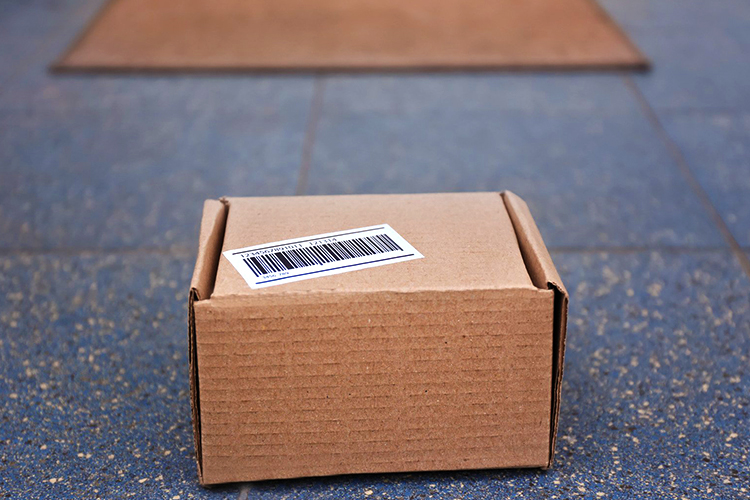How to Avoid Shipping Losses

Whether you’re meeting them for the first time, or you’ve been their go-to for 20+ years, we know you do everything you can to provide your customers the best jewelry buying experience possible.
Over the past year, we’ve seen shipping protocols and guidelines evolve drastically as a result of COVID and it’s important to continuously refresh your best practices.
Shipping coverage only addresses losses during transit, which is marked by carrier acceptance and carrier delivery scans. So, while you probably can’t drive the delivery truck to the destination yourself, there are a few simple steps you can take prior to sending the package to help ensure a successful delivery.
1. Consider COVID Protocols
With COVID protocols in place and contact-free practices now fundamental in many industries, carriers are under relaxed signature collection processes. This can be detrimental for you and your recipient if you’re depending on a signature to confirm a successful delivery.
Upgrading to the Adult Signature option that carriers offer is a simple step you can take to give the optimal level of protection for your shipments. While Adult Signature service is commonly used for higher risk classes such as pharmaceutical, alcohol and high value contents, – you can also take advantage of this option for jewelry.
Activating this option means that, regardless of COVID contact-free practices, carriers are required to make verbal contact and hand the package directly to a recipient (minimum 18 years of age) at the delivery address.
2. Look Into Building or Residence Rules and Guidelines
Shipments to multi-occupancy commercial or residential locations come with an elevated level of risk which means it’s a good idea to do some research prior to shipping your package.
As you may know, carrier proof of delivery to the building or building personnel is the conclusion of shipping coverage which means you can’t always be sure that your package ended up in the correct hands even if the package made it to the correct address.
Looking into the handling protocol for receiving packages at your recipient’s location will help you decide whether to pivot your plan to a safer destination where your customer can receive the package directly.
To avoid the headache all together, consider delivering to an alternate non-multi-occupancy building or sending as “hold for pickup” to an official carrier facility instead. These choices will eliminate the unknowns that come with sending to multi-occupancy buildings and give both you and your recipient added peace of mind.
3. Monitor the Progress of Your Shipment
Though this may seem like a given, it is a step often overlooked. Staying in communication with your recipient on each package – letting them know when to expect delivery and checking with them to affirm receipt – not only will help you build lasting client relationships, but it’ll also give you transparency into every step of the shipping process.
Knowing the status of your packages during each step of the shipment journey means you’ll have a better understanding of what happened should a loss occur. Plus, you’ll be able to successfully report a loss within 30 days of the shipment being sent, fulfilling insurance requirements and giving your recipient the support they deserve.
Keep in mind that, while you have 30 days, reporting a loss as soon as possible allows our team the best opportunity to recover your package.
4. Know Which Shipping Locations to Avoid
Though drop boxes can seem like a quick and efficient solution for package deliveries, the use of them voids all insurance coverage. It’s important to avoid all kinds of drop boxes or mail receptacles and obtain a system- generated carrier receipt for each shipment.
In addition, there is a substantially higher risk with sending to a carrier outlet, third party business, or non-carrier location such as UPS Store®, PostalAnnex®, Walgreens, CVS®, or others of the like. While these might seem like convenient options, your coverage concludes the minute the carrier drops off at those locations and does not require an in-person hand off.
When in doubt – always send to locations where you are certain a recipient signature at the time of delivery or carrier generated receipt will be given.
5. Skip the Waiver and Release of Signature
Though this isn’t a step you take as a jeweler, reminding your customers not to keep a waiver or release of signature on file with the carrier is important because they allow for the package to be dropped off without a signature at the time of delivery. This significantly increases the chances of a package ending up in the wrong hands.
Note: even though your recipient may not have put a waiver in place, it’s possible that one exists from a prior tenant.
6. Know Your Coverage So You Can Trust Your Coverage
While you likely know the basics of what is covered by your policy, there may be some question on where exactly coverage begins and ends for each of your shipments. Taking the time to educate yourself on the ins and outs of your coverage and reaching out to your agent when you’re looking for clarification can make all the difference when it comes to loss prevention.
These considerations and best practices not only will give both you and your recipient piece of mind and help ensure successful deliveries – they will also help you create more trusting relationships with your customers so they feel confident coming back and purchasing from you in the future.
Source: Jeweler’s Mutual